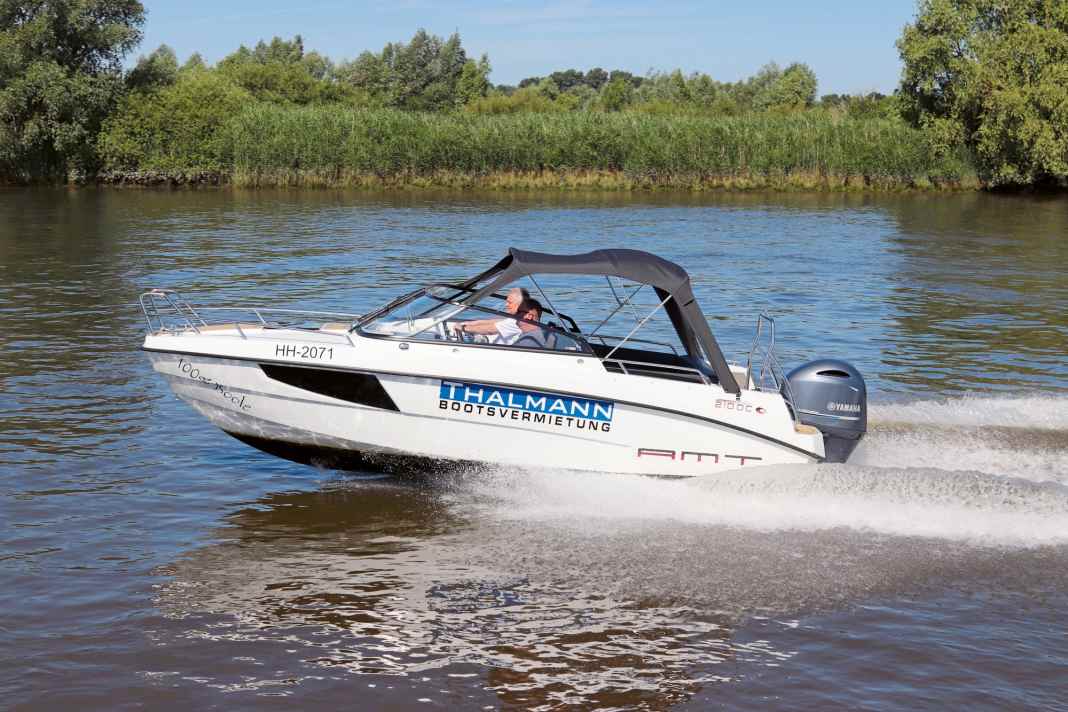





The only reason for restrictions is the trend towards ever higher engine power and speeds. At high speeds, which can often only be achieved with the drive or engine trimmed way down (high trim), the hull lifts almost completely out of the water. This results in reduced course and lateral stability. A sensitive throttle and steering hand are then required. Inexperienced drivers in particular should not overdo it with speed and fast manoeuvres.
Advantages of the trim position
It can also be less dramatic - if the engine power and propeller are sensibly matched to the boat size and weight. For example, a test drive with a Sea Ray 245 DA showed that it runs well in rough water when optimally trimmed and is stable on course. Further advantages of this trim setting: We measured a fuel saving of seven per cent (full throttle). The boat consumed the most petrol when the drive was trimmed too low and the nose of the boat was in the water.
Help from engine manufacturers for the right power trim
We also noticed good handling with the AMT 210 DC (shown in the pictures above); properly trimmed, it drove like it was on rails. If you never really get used to the power trim or simply want comfort, you can find help from the engine manufacturers. For example, sterndrives from Volvo Penta and Mercury Marine as well as some outboards from Honda, Mercury, Suzuki and Yamaha can be ordered with a trim assistant. Correctly programmed (assistance is provided by boat dealers), the assistants automatically trim the outboard(s) and sterndrives to the optimum position.
